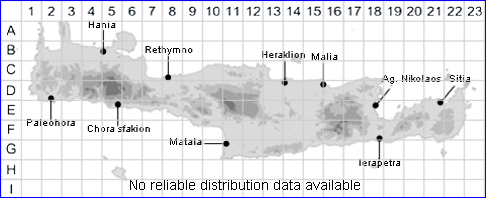
SPECIES DESCRIPTION
OPHRYS TENTHREDINIFERA ssp. LEOCHROMA
For more information relating to this species please visit the following link
Family:- ORCHIDACEAE
Common Names:-
Synonyms:- None
Meaning:- Ophrys (L) Eye-brow, a name used by the Roman naturalist and
philosopher Pliny.
Tenthredinifera (L) Insect-bearing, harbouring sawflies.
Leochroma (L) Reference to its hairy lip, thought to resemble a lions
mane.
Distribution:- Unknown
Flowering time:- Jan-Apr.
Photos by:- Fotis Samaritakis
FAMILY AND GENUS DESCRIPTIONS
ORCHIDACEAE
General description:- Perennial herbs with rhizomes, vertical stock or tuberous
roots, terrestrial, sometimes obtaining nutrition from decaying matter (saprophytic),
usually with symbiotic fungi in or on the roots (mycorrhiza).
Stems:- Sometimes swollen at base to form pseudobulbs.
Leaves:- Entire, spirally arranged or in two opposite rows, one on each side of the
stem (distichous), rarely subopposite, reduced to scales or sheaths in
saprophytes.
Flowers:- Inflorescence a spike or raceme. Flowers zygomorphic, the sepals,
petals and stamens apparently inserted higher than the ovary (epigynous), usually
hermaphrodite. Perianth-segments 6, in 2 whorls; median inner segment (labellum)
usually larger and of different shape from the others, usually directed downwards
owing to the ovary or the stem (pedicel) twisting through 180°, often with basal
spur. Anthers and stigma borne on a column formed from fused filaments and style;
stamens 1, rarely 2, with stalkless (sessile) or short-stalked (subsessile), 2-celled
(2-locular) anthers behind or at the summit of the column; pollen-grains single or in
tetrads, bound by elastic threads in packets (pollinia) which may be narrowed into
a sterile, stalk-like caudicle. Ovary inferior, 1-locular, with parietal placentation,
rarely 3-locular; stigmas 3, all fertile, or with the median sterile and often consisting
of a beak-like process (rostellum) between the anthers and fertile stigmas;
rostellum often forming 1 or 2 viscid bodies (viscidia) to which the pollinia are
attached; viscidia sometimes enclosed in 1(2), simple or 2-lobed, membranous,
pocket-like outgrowths (bursicles) of the rostellum.
OPHRYS
General description:- Tubers 2(-3), globose or ovoid, entire.
Leaves:- Usually in a basal rosette, sometimes also present on the stem.
Flowers:- Perianth-segments more or less spreading (patent), unequal; outer
oblong or ovate, obtuse; inner lateral smaller, often hairy.The lowest petal
(labellum) entire to 3-lobed, often convex and pouch-like (gibbous), sometimes with
an apical appendage which is often deflexed, hairless (glabrous) or velvety
(velutinous), variably marked, with usually glabrous central area (speculum); spur
absent. Rostellum minute. Viscidia in 2 simple bursicles.
Key features:-
1) Labellum neither inflated nor slipper-shaped; with distinctively coloured and
shaped central area (speculum).
Many species of Ophrys can cross to produce hybrids, which are often fertile.
